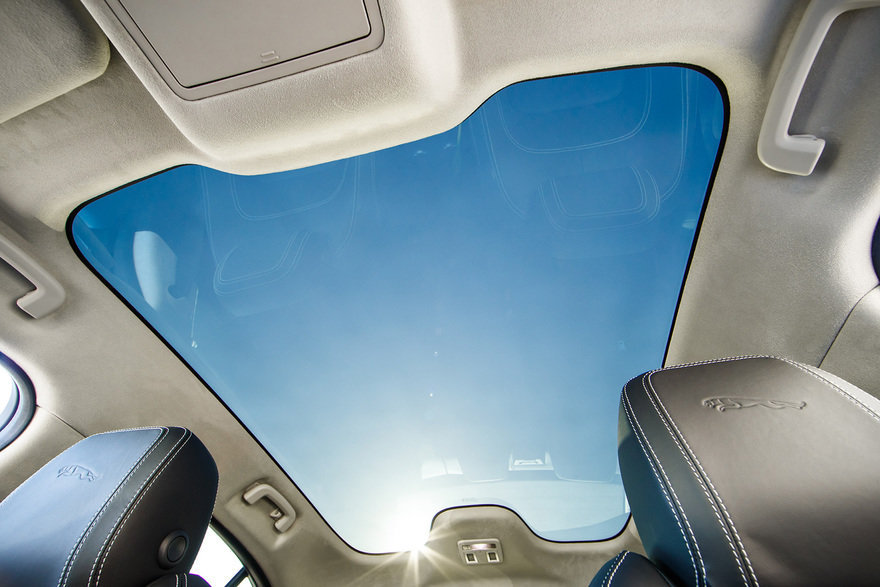#HTE
Jaguar’s New I-Pace, Part 1: Test Drive

Core77 was recently invited to test drive Jaguar’s I-Pace, their new, category-bending all-electric SUV. Debuted as a concept car last year to critical acclaim–it won Most Significant Concept Vehicle of 2017 at the 16th North American Concept Vehicle Awards–the I-Pace was swiftly green-lit for 2018 production, and Core77 was on-site in Portugal with an assembled team of journalists selected to evaluate the freshly-rolled-out car.


The I-Pace is part luxury sports car and part luxury SUV. Power comes via two electric motors, one on each axle, that deliver a combined 394 horsepower and 512 lb-ft of torque through all four wheels as needed. It’s got a 240-mile range, 51 cubic feet of storage space with the rear seats folded down, and an absurdly large panoramic glass roof that lets in light without the heat from infrared radiation (the glass filters it out).



Climbing into the car, the fit and finish are top-notch, with handsomely stitched leather surfaces and a large central touchscreen. Cockpit storage abounds with a cavernous compartment amidseats–it will hold two bottles of wine, for chrissakes–and while our test model featured USB ports, the production version will reportedly feature capacitive charging for your smartphone.






The seating position is higher than in a sports car, and lower than in a proper SUV. So which is it? We hit the road to find out.

First off, this car is freaking quick. Putting your foot down launches you from 0-60 in a blistering 4.5 seconds, and being electric there are no gears to go through; you go from dead-stop to FAST in a singular, thrilling whoosh. (That whoosh, by the way, isn’t just wind noise. While there’s no engine growl, a finely-tuned sound has been created by Jaguar’s engineers to provide audio feedback from what would otherwise be a silent pair of motors. More on that from designer Wayne Burgess’ chat in Part 2.)

The I-Pace handles like a sports car–and a mid-engined one at that. Because the bottom of the chassis is lined with a battery array, and because there are motors on both axles, the weight distribution is nearly a perfect 50-50 and the bulk of the weight is way down low to the ground. That makes the car feel extraordinarily well-planted, both while we were hurtling around on the track and whipping it around twisty hillside switchbacks.


To prove the car’s off-road prowess, the Jaguar handlers sent us up a long, unpaved uphill climb at an angle that, at points, felt like 45 degrees. There’s a slow-speed cruise control feature that can be used both while climbing and descending, which lets you off-load the task of keeping the car at a safe, steady pace so that you can concentrate on steering clear of obstacles. I found the feature reassuring for going both uphill and downhill.





For those who live in flood-prone areas, the I-Pace can wade through nearly 20 inches of water with no difficulty or filter-flooding.

A purist wouldn’t call the I-Pace a true SUV; but I put the car’s capabilities in the good-to-have, peace-of-mind category. The I-Pace’s off-road prowess will probably appeal to the motorist who wants a vehicle primarily for on-road use but who wants to know that it can tackle trouble should the need arise.

So that’s how the car performs. But what Core77 readers are most interested in is, of course, the design. Stay tuned for our deep dive with Jaguar designer Wayne Burgess.

https://www.core77.com/posts/78880/Jaguars-New-I-Pace-Part-1-Test-Drive
